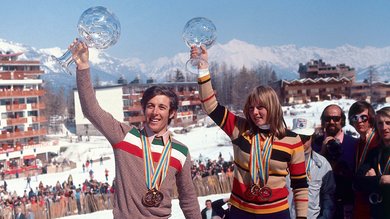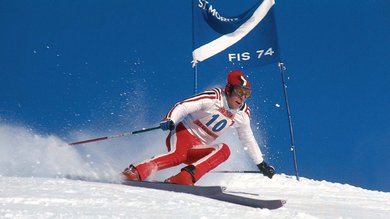The path to the top
On 28 February 1951, Gustav Thöni was born in Trafoi – fittingly in winter, as it turns out. With his very first skis (homemade by his grandfather) Gustav practiced in the snow and made his first turns on Passo dello Stelvio/Stilfserjoch – coached by his father Georg, “half Fürst Orsini, half Luis Trenker”, as the Austrian magazine Ski-Welt once described him, who was himself a ski instructor. That’s how Thöni junior became one of the greatest ski talents seen in decades. At the age of 14, he won the prestigious Topolino race on Mount Bondone and then joined the national team at 17. On 27 March 1969, Gustav won a giant slalom in Val d’Isère, which was part of the Alpencup, where the world elite were competing. For the Azzurri, this marked “the first big international success in a major race” for years, as the Gazzetta dello Sport reported. And the Dolomiten newspaper was spot on with its title: “Gustav Thöni advances to the world elite”.

























